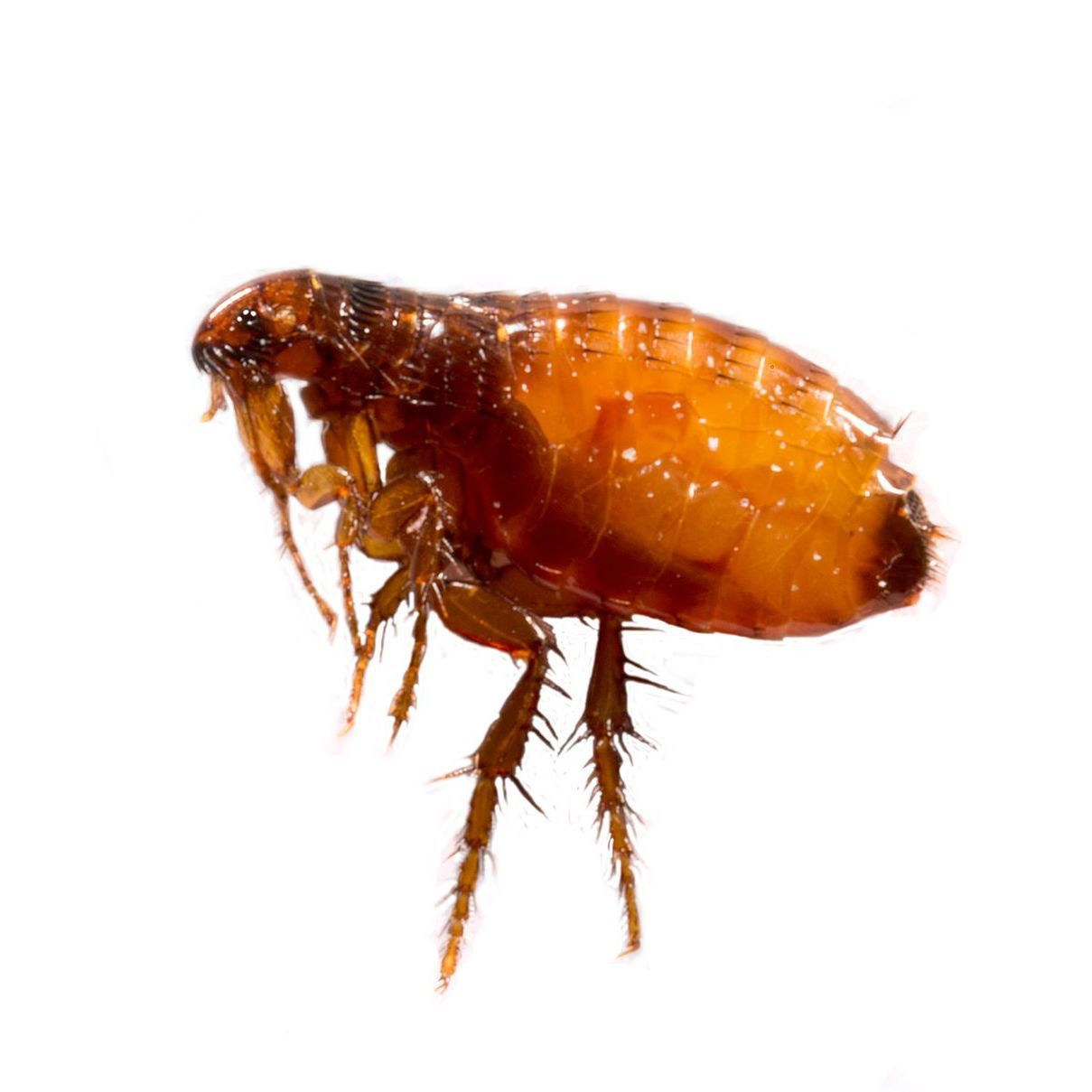Fleas

Feline Flea(Cat Flea)
Feline fleas, commonly known as cat fleas (Ctenocephalides felis), are small, wingless insects that feed on the blood of cats and other mammals, including dogs and humans. Fleas are common ectoparasites that can cause discomfort and health issues for both pets and humans. Here is some information about feline fleas:
- Physical Characteristics:
- Adult cat fleas are small, ranging from 1 to 2.5 millimeters in length.
- They are flattened from side to side, which allows them to move through the fur of their hosts easily.
- Cat fleas are typically brownish-black in color.
- Life Cycle:
- The life cycle of a cat flea consists of four stages: egg, larva, pupa, and adult.
- Female fleas lay eggs on the host (the cat) or in the surrounding environment, such as bedding or carpets.
- Flea larvae hatch from the eggs and feed on organic debris.
- Larvae spin cocoons and pupate, eventually emerging as adult fleas.
- The entire life cycle can be completed in as little as a few weeks, depending on environmental conditions.
- Feeding Behavior:
- Adult cat fleas feed on the blood of their hosts.
- They use specialized mouthparts to pierce the skin and consume blood.
- Flea bites can cause itching, redness, and skin irritation in both cats and humans.
- Hosts:
- While cat fleas are named for their common association with cats, they can infest other animals, including dogs, rodents, and wildlife.
- Humans can also be bitten by cat fleas, leading to skin irritation and discomfort.
- Transmission of Diseases:
- Cat fleas are known vectors for certain diseases, including Bartonella bacteria, which can cause cat scratch fever in humans.
- They can also transmit tapeworms if ingested by the host during grooming.
- Signs of Infestation:
- Scratching, biting, and excessive grooming are common signs of flea infestation in cats.
- Presence of flea dirt (tiny, dark specks resembling ground pepper) in the cat's fur or on bedding is an indicator.